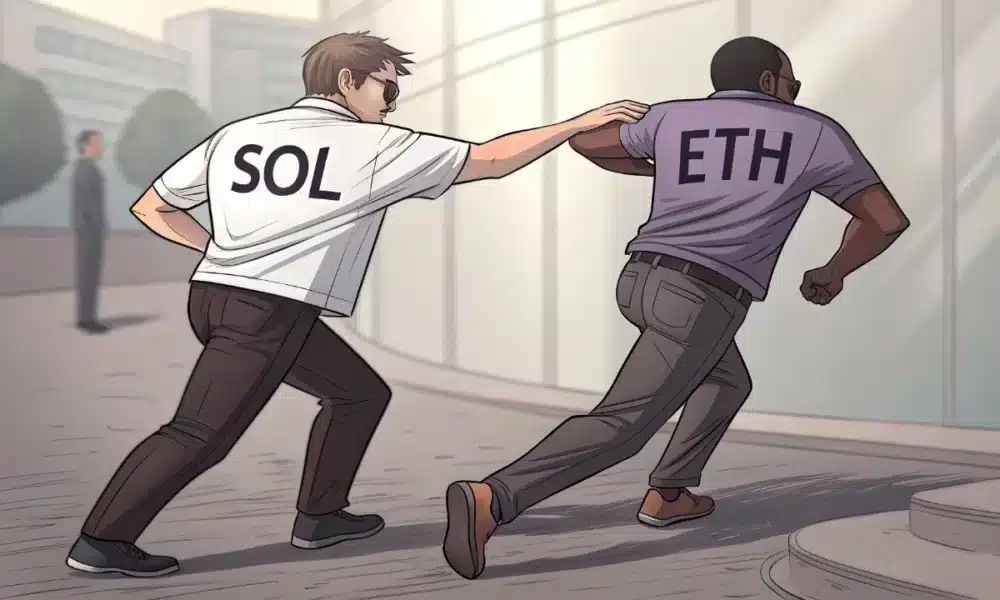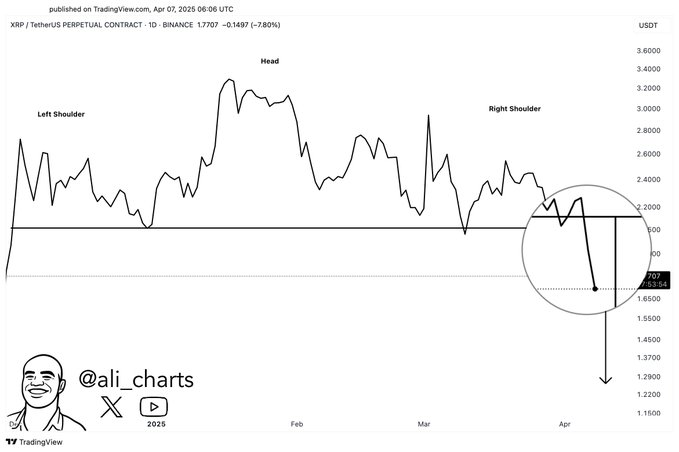The Emerging Rivalry: Solana vs. Ethereum
The cryptocurrency landscape is ever-evolving, with new projects and technologies emerging constantly. Two of the most prominent players in the blockchain world have been Ethereum (ETH) and Solana (SOL). Both platforms have made significant strides in the decentralized finance (DeFi) and non-fungible token (NFT) markets. However, recently, Solana has been gaining significant traction, threatening Ethereum’s dominance.
Solana’s Surge
Solana, a relatively new blockchain platform launched in 2020, has been making waves in the crypto community due to its high transaction speed and low fees. Solana’s proof-of-stake consensus mechanism, called Proof of History (PoH), allows for up to 65,000 transactions per second (TPS), a significant improvement over Ethereum’s current 15-30 TPS.
Moreover, Solana’s fees are significantly lower than Ethereum’s, making it an attractive option for developers building DeFi and NFT projects. Solana’s growing ecosystem includes popular projects like Serum, Raydium, and Magic Eden, which have seen massive growth in user adoption and trading volumes.
Ethereum’s Challenges
Ethereum, on the other hand, has been facing its own set of challenges. Ethereum’s transition to Ethereum 2.0, which aims to improve the network’s scalability and security, has been a long and arduous process. The Ethereum network has been plagued with high fees and network congestion, leading to a poor user experience for many.
Moreover, Ethereum’s DeFi and NFT markets have seen a significant influx of users and projects, leading to increased competition and network congestion. This has resulted in higher fees and slower transaction times, making it less attractive for some developers and users.
Impact on Individuals
As an individual investor or user, the emergence of Solana as a viable alternative to Ethereum could mean several things. Firstly, it could lead to increased opportunities for investment and participation in new DeFi and NFT projects, given Solana’s lower fees and faster transaction speeds.
Additionally, it could result in improved user experience and cost savings for existing users and developers on the Solana network. However, it’s important to note that investing in cryptocurrencies always carries risk, and it’s crucial to do thorough research before making any investment decisions.
Impact on the World
The rise of Solana as a potential Ethereum rival could have far-reaching implications for the broader crypto ecosystem and the world at large. Firstly, it could lead to increased competition and innovation in the blockchain space, driving technological advancements and new use cases.
Moreover, it could result in improved accessibility to decentralized finance and non-fungible tokens for a larger user base, potentially leading to increased financial inclusion and economic opportunities.
Conclusion
In conclusion, the emerging rivalry between Solana and Ethereum is an exciting development in the cryptocurrency and blockchain space. Solana’s high transaction speed, low fees, and growing ecosystem make it an attractive alternative to Ethereum, particularly for developers and users building and interacting with DeFi and NFT projects.
However, it’s important to remember that investing in cryptocurrencies always carries risk, and it’s crucial to do thorough research before making any investment decisions. Additionally, the impact of Solana’s rise on the broader crypto ecosystem and the world at large remains to be seen, but the potential for increased competition, innovation, and financial inclusion is significant.
- Solana’s proof-of-stake consensus mechanism allows for up to 65,000 TPS, significantly faster than Ethereum.
- Solana’s fees are significantly lower than Ethereum’s, making it an attractive option for developers and users.
- Ethereum’s transition to Ethereum 2.0 has been a long and arduous process, leading to high fees and network congestion.
- Solana’s growing ecosystem includes popular projects like Serum, Raydium, and Magic Eden, which have seen massive growth in user adoption and trading volumes.
- As an individual investor or user, the rise of Solana could lead to increased opportunities for investment and participation in new DeFi and NFT projects, improved user experience, and cost savings.
- The impact of Solana’s rise on the broader crypto ecosystem and the world at large could lead to increased competition and innovation, improved accessibility to decentralized finance and non-fungible tokens, and potential financial inclusion.





